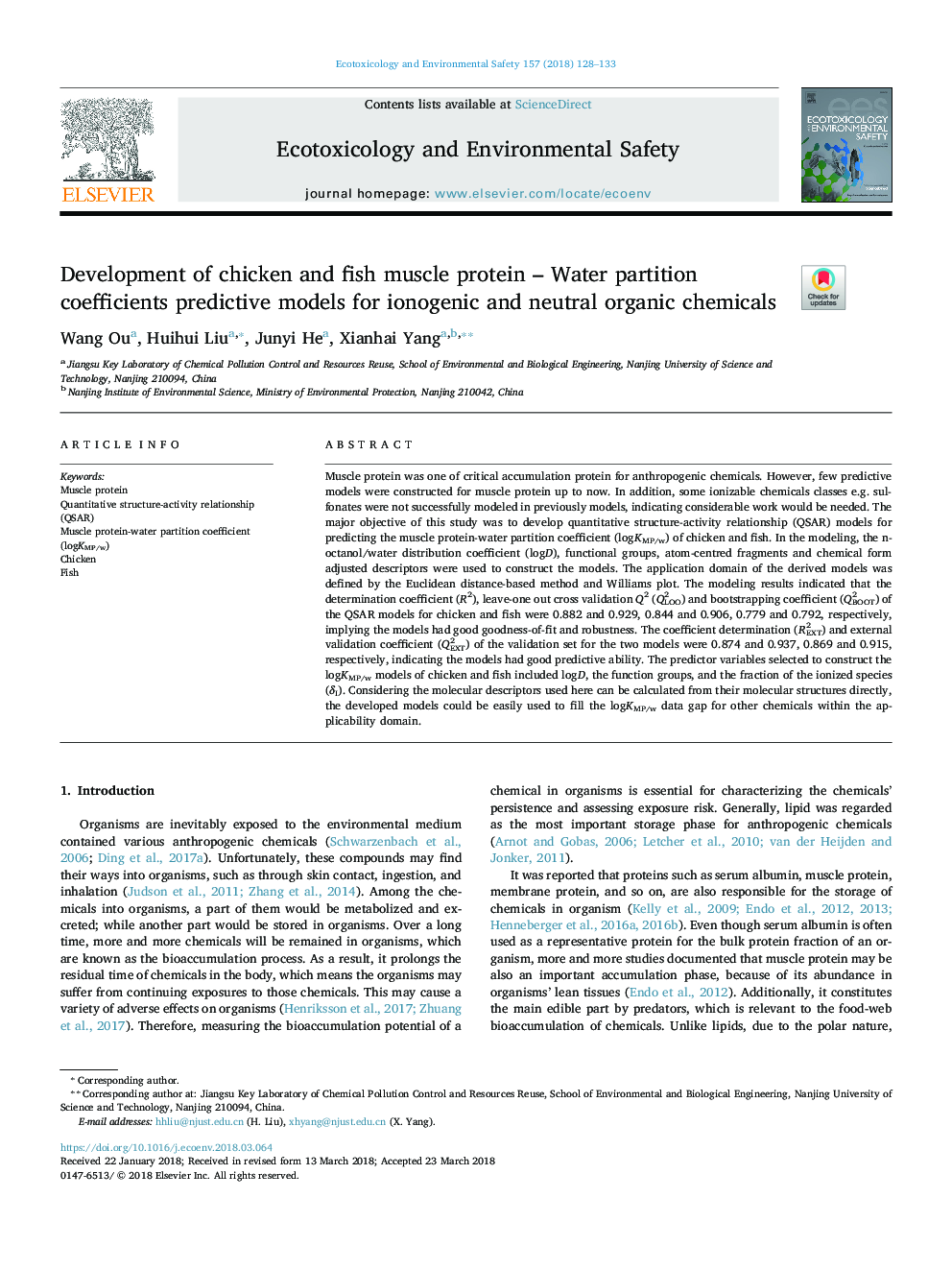| کد مقاله | کد نشریه | سال انتشار | مقاله انگلیسی | نسخه تمام متن |
|---|---|---|---|---|
| 8853815 | 1618907 | 2018 | 6 صفحه PDF | دانلود رایگان |
عنوان انگلیسی مقاله ISI
Development of chicken and fish muscle protein - Water partition coefficients predictive models for ionogenic and neutral organic chemicals
ترجمه فارسی عنوان
توسعه پروتئین عضله مرغ و ماهی - مدل پیش بینی ضریب پراکندگی آب برای مواد شیمیایی آلی و یونوژن
دانلود مقاله + سفارش ترجمه
دانلود مقاله ISI انگلیسی
رایگان برای ایرانیان
کلمات کلیدی
موضوعات مرتبط
علوم زیستی و بیوفناوری
علوم محیط زیست
شیمی زیست محیطی
چکیده انگلیسی
Muscle protein was one of critical accumulation protein for anthropogenic chemicals. However, few predictive models were constructed for muscle protein up to now. In addition, some ionizable chemicals classes e.g. sulfonates were not successfully modeled in previously models, indicating considerable work would be needed. The major objective of this study was to develop quantitative structure-activity relationship (QSAR) models for predicting the muscle protein-water partition coefficient (logKMP/w) of chicken and fish. In the modeling, the n-octanol/water distribution coefficient (logD), functional groups, atom-centred fragments and chemical form adjusted descriptors were used to construct the models. The application domain of the derived models was defined by the Euclidean distance-based method and Williams plot. The modeling results indicated that the determination coefficient (R2), leave-one out cross validation Q2 (Q2LOO) and bootstrapping coefficient (Q2BOOT) of the QSAR models for chicken and fish were 0.882 and 0.929, 0.844 and 0.906, 0.779 and 0.792, respectively, implying the models had good goodness-of-fit and robustness. The coefficient determination (R2EXT) and external validation coefficient (Q2EXT) of the validation set for the two models were 0.874 and 0.937, 0.869 and 0.915, respectively, indicating the models had good predictive ability. The predictor variables selected to construct the logKMP/w models of chicken and fish included logD, the function groups, and the fraction of the ionized species (δI). Considering the molecular descriptors used here can be calculated from their molecular structures directly, the developed models could be easily used to fill the logKMP/w data gap for other chemicals within the applicability domain.
ناشر
Database: Elsevier - ScienceDirect (ساینس دایرکت)
Journal: Ecotoxicology and Environmental Safety - Volume 157, 15 August 2018, Pages 128-133
Journal: Ecotoxicology and Environmental Safety - Volume 157, 15 August 2018, Pages 128-133
نویسندگان
Wang Ou, Huihui Liu, Junyi He, Xianhai Yang,
